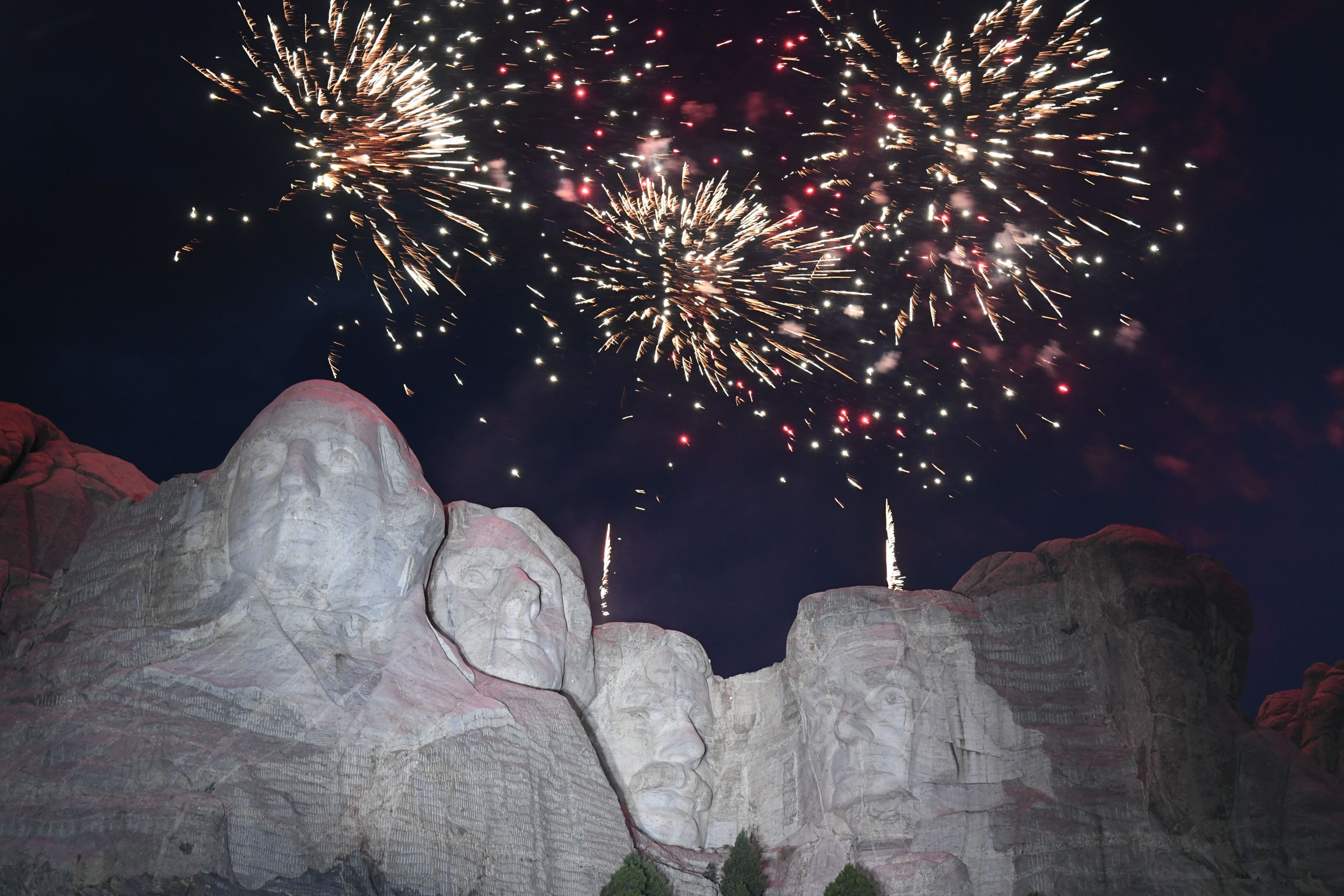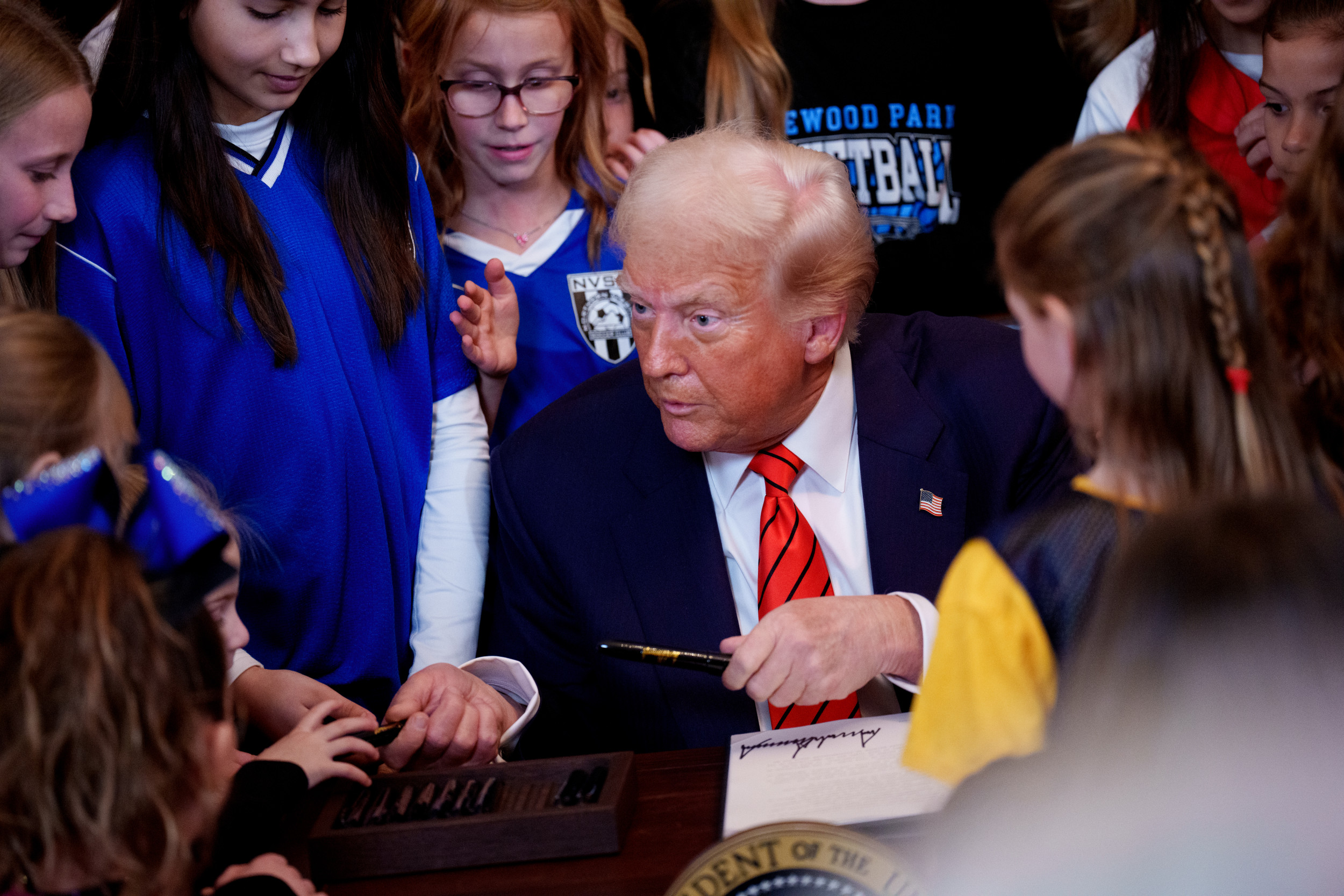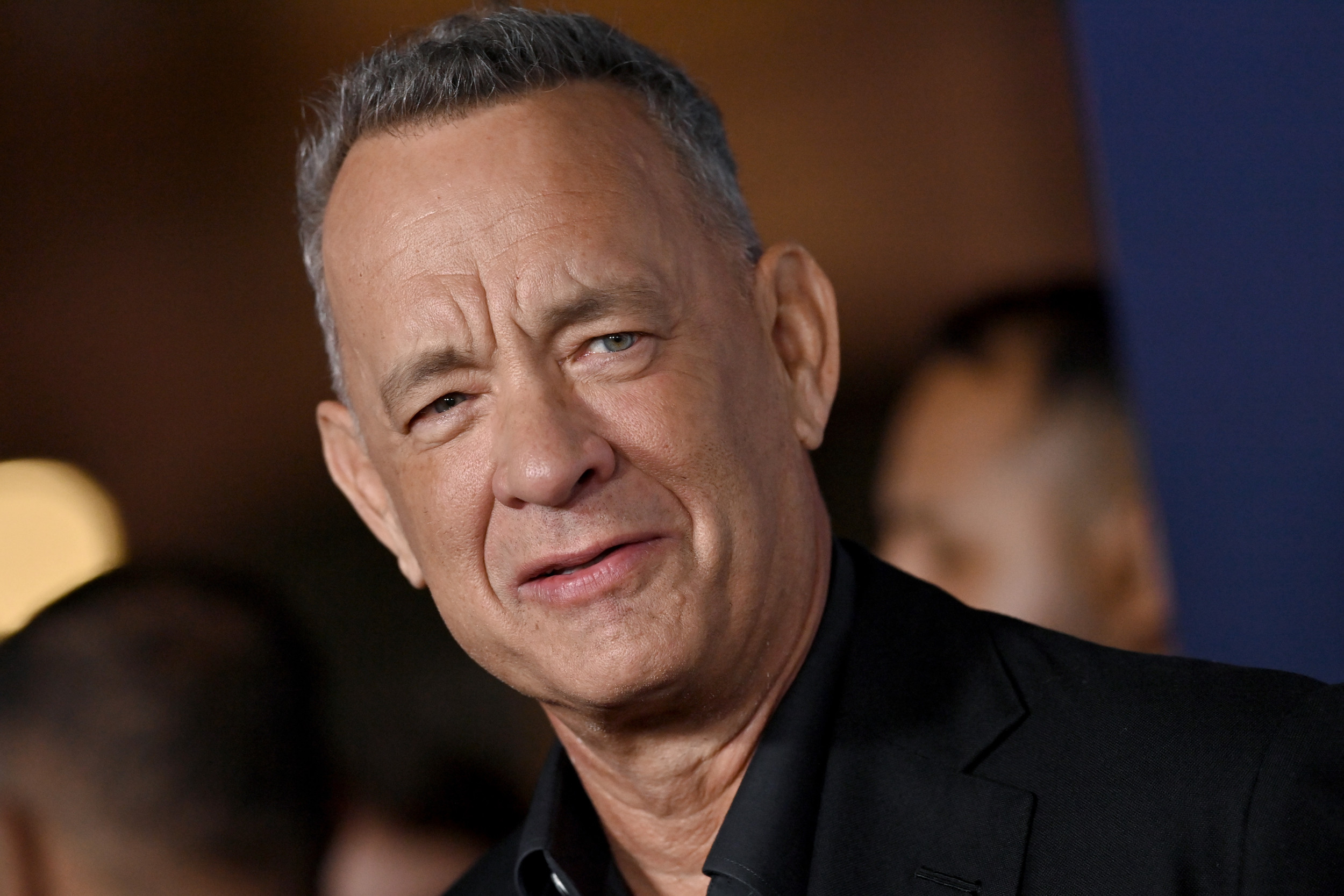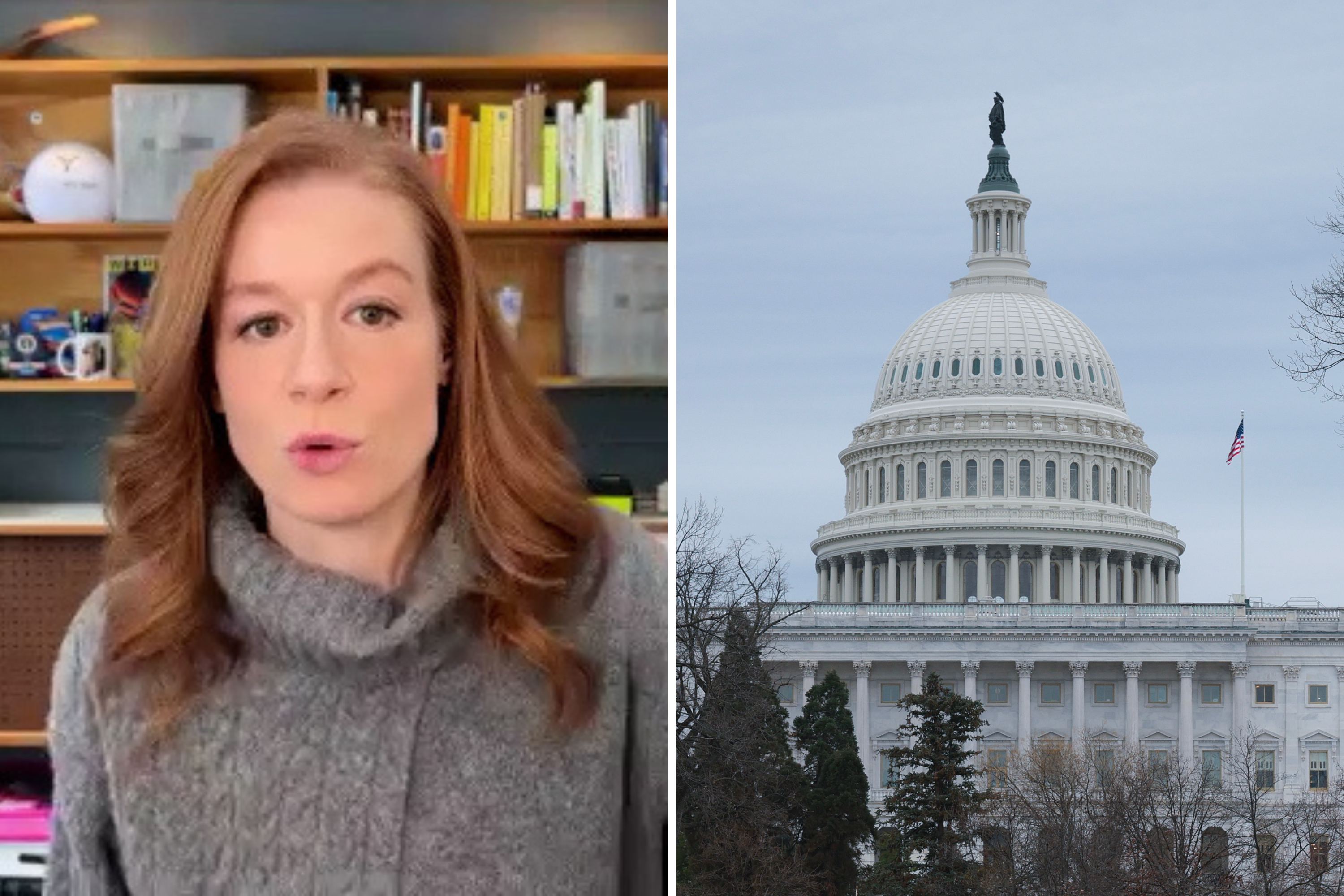President Donald Trump's agenda is quickly taking shape in the weeks since he returned to power vowing to end social liberalism and usher in a new era of American prosperity. Through a shock-and-awe flurry of executive orders and other actions, Trump started a massive crackdown on illegal immigration, withdrew the United States from the World Health Organization and Paris climate accord, issued sweeping pardons to the rioters charged with participating in the January 6 attack on the U.S. Capitol and began the process of dismantling federal diversity, equity and inclusion programs. Welcome to Trump's self-described "golden age of America."
The administration's early moves have put Washington—and the rest of the world—on notice that Trump is determined to turn his campaign promises into reality. Anyone doubting his sense of mission would do well to remember Trump's belief that divine intervention helped him survive an assassin's bullet and reclaim the White House. "My life was saved for a reason," Trump told the nation in his second inaugural address. "I was saved by God to make America great again."
The MAGA project is clear by now, nearly one decade into the Era of Trump. The question is, how effective can Trump be in his second go-around?

The initial signs seem promising for Trump, starting with the fact that the political environment is friendlier to him now than it was when he took office as a Beltway outsider in 2017. Back then, Trump's party controlled Congress but he faced internal opposition from moderate Republicans, as well as a highly energized Democratic resistance.
Today, Trump loyalists dominate the leadership and rank-and-file in the GOP-controlled House and Senate. The federal courts are also now loaded with Trump appointees, including the three justices Trump placed on the U.S. Supreme Court to give the conservative bloc a 6-3 majority. Democrats haven't settled on a strategy going forward, after spending all of last year arguing that Trump's impeachments, felony conviction, other legal problems and failed effort to overturn his 2020 election loss made him an existential threat to democracy.
"People are thinking about institutions where they can pull levers of power and not just be sort of out in the streets in that resistance posture" Democrats adopted when Trump took office the first time, said Tory Gavito, a Democratic strategist. "It's not going to look the same."
Republicans point to the disarray on the left and the team Trump's assembled as proof that his second term will be more productive than the first. Trump sparked anger with his picks to lead the Defense and Justice Departments (former Florida Rep. Matt Gaetz, Trump's first pick to serve as attorney general, withdrew his bid amid sexual assault allegations). But Trump has also surrounded himself with a trusted inner circle of aides who could bring discipline to the West Wing, the argument goes. The group is led by top domestic policy adviser Stephen Miller and White House Chief of Staff Susie Wiles, Trump's 2024 campaign co-manager and a universally respected figure in Republican circles.

But Trump's success is by no means assured as he embarks on his second term. He's already facing significant obstacles to his agenda—from ending Russia's war in Ukraine to avoiding a government shutdown in March and securing an extension of his first-term tax cuts. Trump aides, allies outside of the administration, party strategists and Republicans in Congress all know they have limited time to show results before facing voters again in the 2026 midterm elections.
"Trump recognizes that the midterms are much closer than they appear and the margins in the House and Senate are very close," said Matt Mackowiak, a Republican strategist. "He's got probably 18 months" to cement his second-term legacy.
Prepared for Immigration Battles
Shortly after winning the election, in one of his first key personnel appointments, Trump named Thomas Homan as his administration's "border czar" in charge of stopping illegal immigration. Homan, who served as acting director of Immigration and Customs Enforcement in the first Trump term, made frequent headlines during the transition period, warning that Trump's mass deportation plan would cost $86 billion and require 100,000 ICE detention beds.
While Homan served as the point person for the coming crackdown, a team of immigration advisers worked quietly behind the scenes to prepare executive orders so Trump could get to work right away on the issue after getting sworn in. According to multiple sources involved in the work, the executive orders Trump ended up signing were designed to avoid the legal pitfalls that stymied much of his immigration agenda at the start of his first term.
Trump's Day 1 executive orders this time included declaring a national emergency at the border; suspending the refugee admissions program; ending the CBP One app for asylum-seekers; and limiting birthright citizenship, which prompted a lawsuit led by the American Civil Liberties Union.

"Denying citizenship to U.S.-born children is not only unconstitutional—it's also a reckless and ruthless repudiation of American values," said ACLU Executive Director Anthony D. Romero.
Newsweek reached out to the White House for comment for this story. It's too early to know how the new legal battles will play out, but immigration rights advocates and others concede that the president's immigration advisers learned from the mistakes of the first Trump administration.
"With better-crafted EOs, courts may be less likely to issue injunctions," Stephen Yale-Loehr, an immigration expert at Cornell Law School, said. "From a legal perspective [the executive orders] may more easily pass judicial scrutiny."
Creating a mass deportation program may prove much harder, however. ICE currently has space to house roughly 40,000 detainees, less than half the capacity Homan said is needed. Then there's the financial hurdles involved. Trump struggled to secure border funding from Congress in his first term. It's unclear how Trump and his allies in Congress will come up with tens of billions for a mass deportation program in the midst of a budget battle over other spending priorities and tax cuts that will dominate the coming months.

Moreover, the Obama administration set a record with 432,000 deportations in fiscal year 2013, federal data shows. Trump would have to surpass that total every year to reach his goal. "Even if Congress appropriates more money, it certainly is never going to be enough to deport millions of people" in a single term, Yale-Loehr said.
Republicans believe the early debates over deportation scenarios under Trump miss the fact that he's succeeded in shifting the country to the right on immigration overall. "He's completely changed the conversation on immigration," said Brian Seitchik, a Republican strategist and former Trump campaign official. "Trump has already won on this issue."
Energy Policy to Spark Backlash
The same may not be true for energy policy, another priority area for Trump that's filled with potential political minefields. Upon taking office, Trump signed an executive order declaring a national energy emergency. Aimed at boosting the fossil fuel industry, the move is part of an effort to roll back former President Joe Biden's climate policies and fulfill an inaugural pledge to "Drill, baby, drill."
But Trump's promise to make the country energy dominant belies the fact that the United States is already a leading energy power. America is now the world's leading producer of crude oil and largest exporter of liquefied natural gas, according to data from the federal Energy Information Administration.
At the same time, Trump's continued claim that climate change is a hoax is also increasingly at odds with many lawmakers in his own party. Trump drew some praise from the right for pulling the U.S. back out of the Paris climate treaty, but a growing number of Republicans have quietly accepted the science around global warming and embraced an "all-of-the-above" strategy that includes clean energy.

Yet Trump's emergency declaration notably left out wind and solar, which together account for 14 percent of U.S. electricity generation. Trump also took separate action to halt offshore wind development. Unlike some of the carefully written executive orders on immigration, the wind power ban is viewed among industry insiders as overly broad and subject to potential challenge in court. Any attempts to cut clean energy programs under Biden's Inflation Reduction Act will also face opposition from Republican lawmakers whose states and districts stand to benefit from investment in renewable projects.
"It's the Trump administration who will be in office when all of this hiring occurs. So it would be political malpractice to undo all of these investments," Jennifer Granholm, Biden's energy secretary and a former Michigan Democratic governor, told Newsweek in an interview shortly before Trump took office.
The tricky politics around energy extend to the debate over electric vehicles, or EVs. Trump signed an executive order on his first day in office ending a Biden administration goal to have EVs make up 50 percent of all U.S. car sales by 2030. But the Environmental Protection Agency may need new rules to accompany Trump's decision in order for it to hold up. And while close Trump ally and Tesla founder Elon Musk has voiced support for ending Biden-era EV subsidies, doing so could draw opposition from some Republican lawmakers.
"I think he's never going to get over" his opposition to things like EVs and wind power, Frank Maisano, a senior principal in Bracewell's Policy Resolution Group, said of Trump. "The president through his executive orders took a symbolic, agenda-setting approach" to energy, but "a lot of that is going to have to be implemented by Congress."

'All Things Possible' on International Front
Trump doesn't have to rely on Congress to flex American power overseas. On the international stage, Trump entered office riding some momentum after his Middle East envoy, Steve Witkoff, played a role in helping Israel reach a ceasefire deal with Hamas in Gaza in the final days of the Biden administration. Trump took partial credit for the victory and used it to argue that it was a sign of things to come under his watch as a strong commander-in-chief.
Elsewhere, China has already signaled that it's willing to work with the new administration on economic issues, an indication Beijing may wish to avoid another trade war. As a candidate, Trump promised to impose steep tariffs on imports from China and other countries. But he held off on pursuing the plan in his first actions after returning to the White House. The decision came as Trump directed the Justice Department to pause its ban on TikTok while he explores ways to keep the app's China-based parent company in business in the U.S.
Arguably, Trump's biggest foreign policy challenge is on the issue he promised to fix right away: winding down Russia's war in Ukraine. On the campaign trail last year Trump said he would end the war in his first 24 hours as president. Now that he's back in office, reality is starting to set in. Secretary of State Marco Rubio, Vice President JD Vance and others in Trump's orbit share his wish to bring a swift conclusion to Europe's largest land war since World War II.
Still, Russian President Vladimir Putin and Ukrainian President Volodymyr Zelensky have the final word on a negotiated settlement to the conflict. As the war nears a grim three-year anniversary, it remains unclear what terms would satisfy Putin's expansionism as well as Zelensky's desire for security guarantees from the West to protect Ukraine against future Russian aggression.

In his first term, Trump's "America First" doctrine meant clashing with allies and cozying up to authoritarian rulers like Putin and North Korea's Kim Jong Un. In the second term, Trump has added his own expansionist impulse to the mix with calls for the United States to take back the Panama Canal and somehow buy Greenland for national security purposes.
"We're in the bubble period right now. All things are possible and [the president is saying that] everything's going to go great," said John Bolton, who served as National Security Adviser to Trump but has turned into a vocal critic. "He certainly knows more than he did before. And he feels more confident," Bolton added, but "the evidence remains that the second term will look like the first term with respect to the chaos and lack of any effective philosophy and strategy."
His pronouncements on global affairs in his first weeks in office bolster the argument that Trump 2.0 won't be all that different. The pardons he issued to hundreds of January 6 rioters also signaled he isn't planning to let go of the past, and some Republicans worry Trump may distract from his agenda by exacting retribution against political opponents or paying too much attention to culture war issues.
"Without another election to be worried about, his legacy and place in history will be at the forefront of his thinking," said another Republican source who's worked with Trump in the past. "Trump's biggest impediment to success is Trump, as it always is. Sometimes he just can't get out of his own way. That's certainly possible now."












